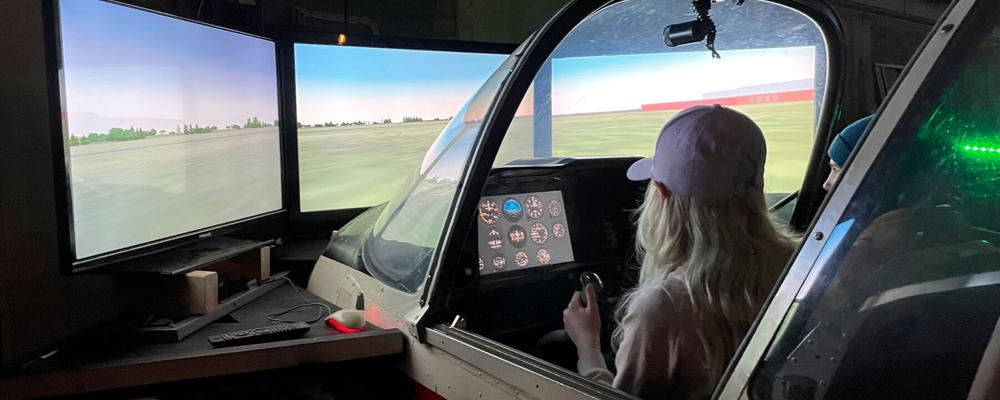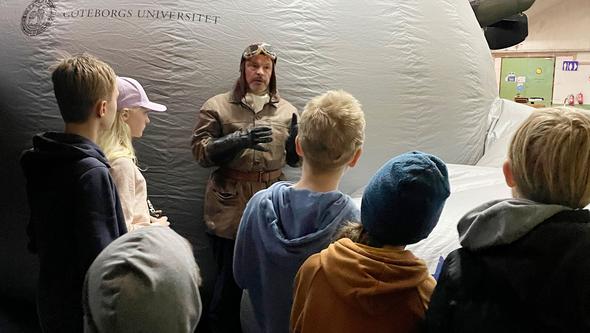
Discovery Club aiming for the stars
It is completely dark inside the planetarium, and for a second or two it is also completely silent. Then the starry sky lights up and suddenly there is flood of questions. “What happens when two stars hit each other?” “What’s that red star in the sky?” “Why is it spinning?”
THE INFLATABLE PLANETARIUM belongs to the University of Gothenburg, and has been used for over 30 years to teach schoolchildren about space. Normally, the planetarium is part of the activities for schools of the Department of Physics, but right now it is at the Aeroseum, the museum of aviation. This is also where the Discovery Club, the Faculty of Science’s after-school activity for pupils in years 4 and 5, went for a final gathering on the theme ‘Aim for the stars’.
“It’s great that we’ve been able to get the Discovery Club up and running again after two long years without being able to meet,” says former club leader Caroline Adiels, who has now passed the baton to her colleague Charlotte Hamngren Blomqvist.
WITH TWO STUDENT teachers, Emil Dahlström and Amelie Peterson, Charlotte runs the club, which usually meets every two weeks in her clubroom at the Earth Science Centre in Gothenburg. But on this particular Wednesday afternoon, the club members have packed themselves into a hired bus and made their way to Hisingen. In the underground rock chamber, club members will learn not only about the firmament and its stars, but also about how aerodynamics work. And, last but not least, try flying in one of the flight simulators available.
IT IS NO COINCIDENCE that the discovery club ended up visiting Aeroseum. There is a long-standing collaboration between the Department of Physics and Aeroseum.
“Like our FysikLek (Physics Play) centre, Aeroseum is an experience-based activity centre that welcomes school classes and holds continuing professional development courses for teachers. This means that we have many common arenas for sharing experience,” says Jonas Enger, Senior Lecturer and Educational Director of FysikLek.
He explains that they try to collaborate in different ways, for example by lending different objects for short periods of time to refresh the exhibitions. The planetarium is one such example.

THERE IS NO DOUBT that the children found the planetarium exciting. But one can’t help wondering whether the flight simulators were perhaps the most popular thing on this Wednesday afternoon. Ivar Ström and Julia Swahn were both pleased with the outing.
“It was fun, and something I can really recommend,” says Ivar Ström.
But even so, he probably doesn’t want to become a pilot.
“I tried to fly under the Hisingen bridge, and I don’t think you’re allowed to do that if you’re a pilot,” he says with a cheeky grin.
THE DISCOVERY CLUB will continue in the spring with its next theme, ‘Focus on colours’.
“We will talk about topics such as why the sky is blue and how the eye works,” says Charlotte Hamngren Blomqvist.
By: Camilla Persson
UPPTÄCKARKLUBBEN/THE DISCOVERY CLUB
The Discovery Club is an after-school activity for children in years 4 and 5. Some children from year 6 who started the Club before the pandemic will also participate in spring 2022.
The Club meets every other Wednesday from 4–6 p.m. in the University’s premises.